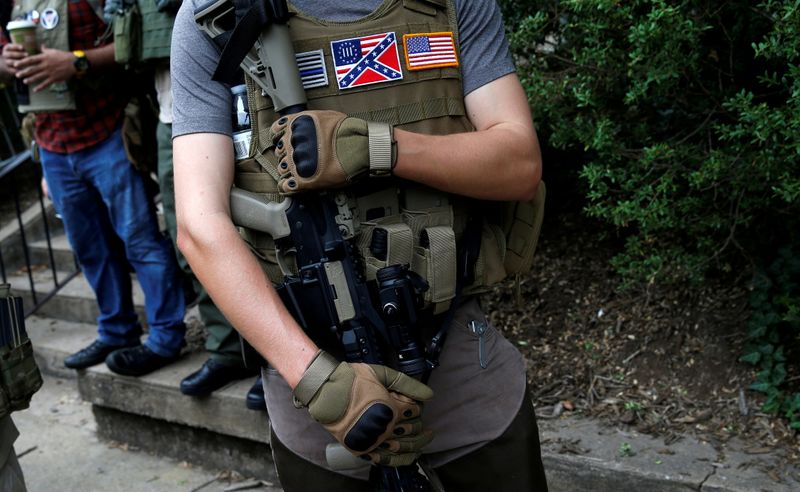(Reuters) -A counterterrorism organization formed by some of the biggest U.S. tech companies including Facebook and Microsoft is significantly expanding the types of extremist content shared between firms in a key database, aiming to crack down on material from white supremacists and far-right militias, the group told Reuters.
Until now, the Global Internet Forum to Counter Terrorism’s (GIFCT) database has focused on videos and images from terrorist groups on a United Nations list and so has largely consisted of content from Islamist extremist organizations such as Islamic State, al Qaeda and the Taliban.
Over the next few months, the group will add attacker manifestos – often shared by sympathizers after white supremacist violence – and other publications and links flagged by U.N. initiative Tech Against Terrorism. It will use lists from intelligence-sharing group Five Eyes, adding URLs and PDFs from more groups, including the Proud Boys, the Three Percenters and neo-Nazis.
The firms, which include Twitter and Alphabet Inc’s YouTube, share “hashes,” unique numerical representations of original pieces of content that have been removed from their services. Other platforms use these to identify the same content on their own sites in order to review or remove it.
While the project reduces the amount of extremist content on mainstream platforms, groups can still post violent images and rhetoric on many other sites and parts of the internet.
The tech group wants to combat a wider range of threats, said GIFCT’s Executive Director Nicholas Rasmussen in an interview with Reuters.
“Anyone looking at the terrorism or extremism landscape has to appreciate that there are other parts… that are demanding attention right now,” Rasmussen said, citing the threats of far-right or racially motivated violent extremism.
The tech platforms have long been criticized for failing to police violent extremist content, though they also face concerns over censorship. The issue of domestic extremism, including white supremacy and militia groups, took on renewed urgency https://www.reuters.com/world/us/biden-administration-unveils-plan-tackle-domestic-terrorism-2021-06-15 following the deadly Jan. 6 riot at the U.S. Capitol.
Fourteen companies can access the GIFCT database, including Reddit, Snapchat-owner Snap, Facebook-owned Instagram, Verizon Media, Microsoft’s LinkedIn and file-sharing service Dropbox.
GIFCT, which is now an independent organization, was created in 2017 under pressure from U.S. and European governments after a series of deadly attacks in Paris and Brussels. Its database mostly contains digital fingerprints of videos and images related to groups on the U.N. Security Council’s consolidated sanctions list and a few specific live-streamed attacks, such as the 2019 mosque shootings in Christchurch, New Zealand.
GIFCT has faced criticism and concerns from some human and digital rights groups over centralized or over-broad censorship.
“Over-achievement in this takes you in the direction of violating someone’s rights on the internet to engage in free expression,” said Rasmussen.
Emma Llanso, director of Free Expression at the Center for Democracy & Technology, said in a statement: “This expansion of the GIFCT hash database only intensifies the need for GIFCT to improve the transparency and accountability of these content-blocking resources.”
“As the database expands, the risks of mistaken takedown only increase,” she added.
The group wants to continue to broaden its database to include hashes of audio files or certain symbols and grow its membership. It recently added home-rental giant Airbnb and email marketing company Mailchimp as members.
(Reporting by Elizabeth Culliford in New York; Editing by Kenneth Li, Lisa Shumaker and Rosalba O’Brien)




























